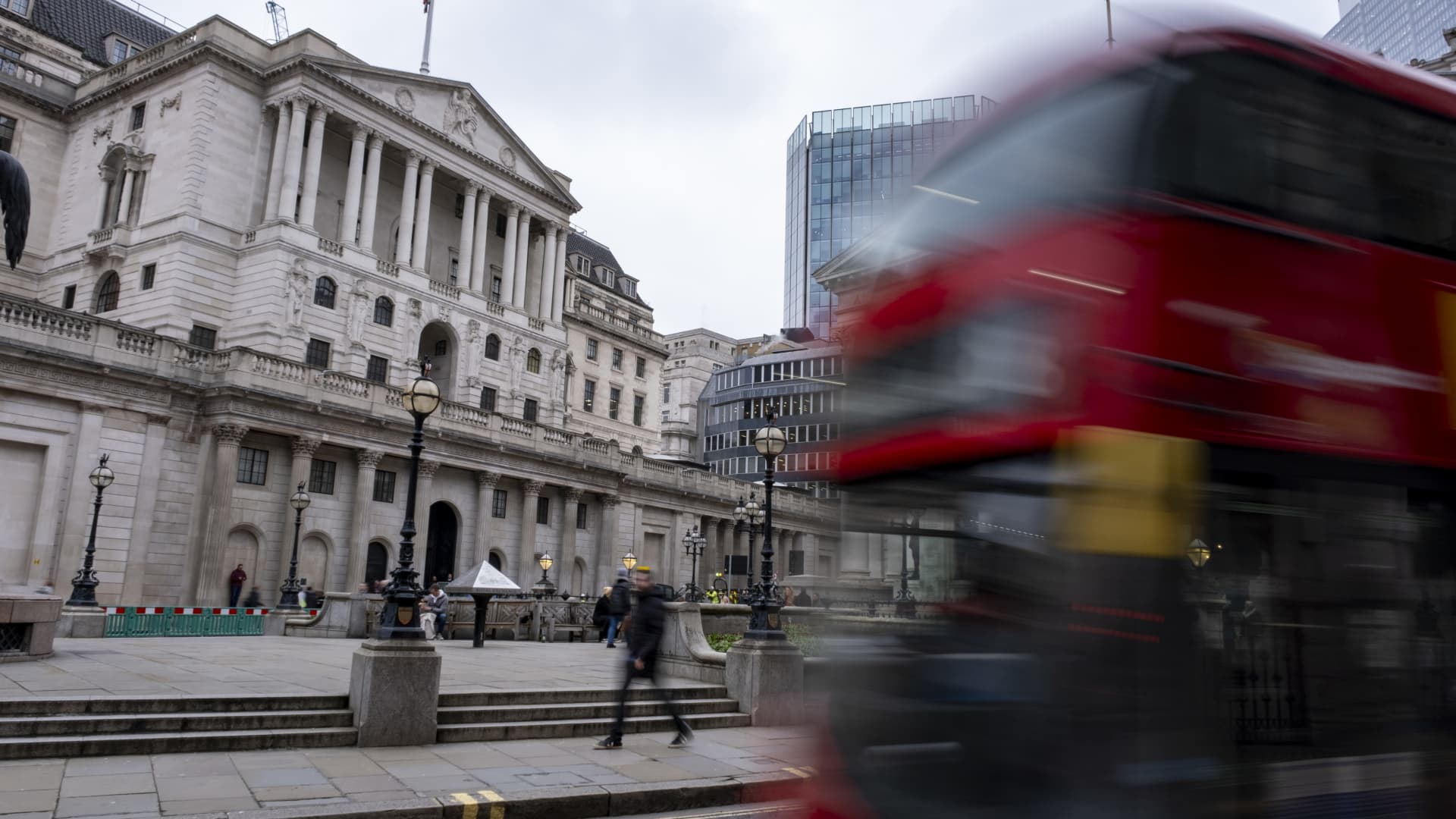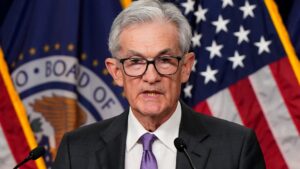
A blurry bus passes the Bank of England in the City of London on February 7, 2024 in London, England.
Mike Camp | In Pictures | Getty Images
Goldman Sachs’ latest forecast suggests the Bank of England may keep interest rates higher for longer before slashing them in the second half of the year.
In a research note released on Tuesday, the Wall Street bank pushed back its forecast for a rate cut by a month, from May to June, citing “relatively firmness” in several key inflation measures.
But it said the central bank may cut interest rates sooner than previously expected as inflation shows signs of cooling.
Goldman Sachs expects five consecutive 25 basis point interest rate cuts this year, taking interest rates to 4% from the current 5.25%. The central bank will then settle at a final interest rate of 3% in June 2025.
In comparison, market expectations are more modest, with three rate cuts expected by December 2024.
“We continue to believe the Bank of England will ultimately ease policy significantly faster than market expectations,” the report said.
Bank of England Governor Andrew Bailey said on Tuesday that investor bets on interest rate cuts this year were “not unreasonable” but declined to give a timetable.
“The market is basically pricing in a curve where we will lower interest rates over the course of the year,” Bailey told British lawmakers at the Treasury Select Committee.
“We won’t predict when rates will be cut or how much,” he continued. “But I think you can see from the outline of the forecast … that the market is not irrational in its thinking.”
Huw Pill, the bank’s chief economist, also said last week The first rate cut is still “months” away.
cooling
Goldman Sachs analysts attributed the delay to the continued strength of the UK labor market and continued wage growth. However, it noted that these pressures are likely to subside in the second half of the year, with lower inflation suggesting “the economy is cooling.”
Goldman Sachs said that if wage growth and service sector inflation remain sticky, there is a 25% chance that the Bank of England will postpone interest rate cuts until after June. However, it also said that if the economy falls into a “proper” recession, the central bank is also likely to cut interest rates more aggressively by 50 basis points.
Preliminary data showed on Thursday that the British economy fell into a technical recession in the last quarter of last year, with gross domestic product shrinking 0.3%.
However, Bailey said on Tuesday that the economy was showing signs of improvement.
“People have emphasized this again, but not as much, about the recession… the fact is that there is a strong story, particularly in the labor market, that actually involves household incomes as well,” he said.
However, he pointed out that the central bank does not need to see inflation fall to its 2% target before it can start cutting interest rates.
UK government bond yields fell after Bailey’s speech, signaling increased investor expectations for a rate cut.




